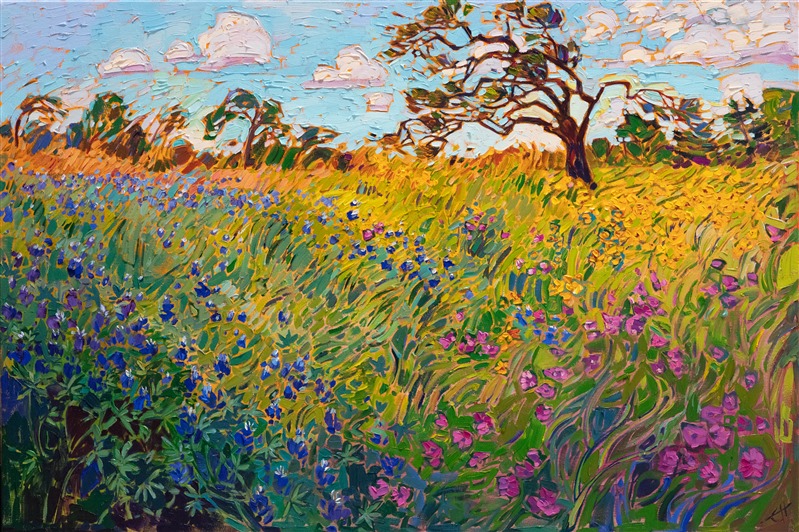One-of-a-Kind Wall Art Solutions: Oil Paintings for Sale
One-of-a-Kind Wall Art Solutions: Oil Paintings for Sale
Blog Article
Exploring Everything About Oil Paints: An Overview to Understanding Their Appeal and Value
Oil paints have actually mesmerized target markets for centuries, using a look right into the creative mastery of various eras. Their abundant background is intertwined with innovative strategies and extensive emotional expression. Recognizing the materials and approaches behind these art work can boost appreciation. In addition, the marketplace for oil paintings presents opportunities for collectors and investors alike. As one explores this fascinating world, the inquiry emerges: what makes an oil paint genuinely beneficial?
The History of Oil Painting: A Trip Via Time
Although oil paint has roots that date back to old times, it really flourished throughout the Renaissance, when artists uncovered its convenience and rich shade capacity. Early instances can be traced to the 7th century, with techniques evolving especially across societies. The tool ended up being prominent in Northern Europe in the 15th century, specifically with the jobs of artists like Jan van Eyck, that pioneered its usage for in-depth realism and vivid shades. This duration marked a separation from tempera paints, permitting better depth and structure. As oil paint spread, it influenced many musicians, causing masterpieces by popular figures such as Leonardo da Vinci and Rembrandt. The medium's heritage proceeds, shaping the art world well right into modern times.
Comprehending Oil Repaints: Materials and Techniques
As artists check out the globe of oil paints, they come across a varied selection of materials and techniques that define this tool. The primary elements of oil paint consist of pigments, which provide color, and drying oils, such as linseed, that bind the pigments and help with application. Different ingredients can change the paint's texture and drying out time, enhancing flexibility. Methods like glazing, where clear layers are accumulated, and impasto, which involves applying thick paint, permit different visual impacts. In addition, making use of brushes, palette knives, and even fingers can create unique structures and surfaces. Understanding these strategies and materials enables artists to totally reveal their creativity and accomplish the preferred influence in their art work.
The Function of Color in Oil Paintings
Shade plays a pivotal duty in oil paintings, influencing both aesthetic allure and psychological vibration. Recognizing color theory essentials, consisting of the relationships in between colors, can improve an artist's ability to share mood and environment. Additionally, understanding color blending methods enables better depth and splendor in a paint's palette.

Shade Theory Basics
Comprehending color concept is essential for musicians dealing with oil paints, as it forms the structure for creating unified and aesthetically engaging make-ups. Color theory incorporates the research study of exactly how colors connect, the shade wheel, and the relationships in between main, secondary, and tertiary shades. Artists make use of complementary shades to improve contrasts and create focal points, while comparable colors advertise unity and cohesiveness within a piece. In addition, the ideas of great and warm colors affect the perception of deepness and space in a paint. Understanding these concepts enables musicians to control shade successfully, guiding the viewer's eye and interacting their intended message. Proficiency of shade theory inevitably enhances a musician's ability to share feelings and concepts through their work.
Psychological Effect of Color
The psychological impact of shade in oil paintings plays an important role in exactly how visitors attach and perceive with art work. Shades evoke certain feelings and state of minds, influencing the visitor's emotion. For example, warm colors like reds and oranges can develop a sense of warmth and power, while trendy tones such as blues and greens commonly stimulate peace or self-questioning. Artists purposefully pick color combinations to boost narrative elements, directing the target market's psychological trip. The saturation and comparison of colors better intensify these effects, attracting focus and developing focus. Inevitably, the interaction of shades in oil paintings not only enhances their aesthetic appeal but also functions as an effective tool for psychological expression, improving the customer's experience and interpretation.
Color Combining Techniques
While several aspects of oil painting add to the general structure, grasping shade mixing techniques is important for accomplishing preferred impacts and depth. Color blending can be come close to with different techniques, including the subtractive and additive procedures. Additive mixing involves combining shades of light, while subtractive blending depends on pigments, where colors blend to produce brand-new shades. Artists often make use of a restricted palette to develop unified works, understanding the partnerships in between primary, secondary, and tertiary shades. Strategies such as glazing and scumbling additionally improve depth and luminosity. By masterfully blending colors, an artist can stimulate emotions, develop focal factors, and achieve a feeling of realism, eventually elevating the paint's emotional and aesthetic influence.
Famous Oil Painters and Their Iconic Works

Famed for their mastery of color and technique, oil painters have actually created a few of one of the most well known art work in background. Popular artists like Vincent van Gogh astounded audiences with his stirring brushwork in "Starry Night," while Claude Monet's "Perception, Sunup" laid the groundwork for Impressionism. Leonardo da Vinci's "Mona Lisa" remains a long-lasting sign of creative genius, showcasing his ability in catching human expression. Rembrandt's "The Night Watch" illustrates his ingenious usage of light and shadow. Other significant figures include Pablo Picasso, who transformed contemporary art with his strong experimentation in works like "Les Demoiselles d'Avignon," and Georgia O'Keeffe, whose dynamic representations of landscapes and flowers helped specify American modernism. Each artist's distinct style added greatly to the oil painting landscape.
Exactly how to Examine the Top Quality of an Oil Paint
Reviewing the high quality of an oil paint involves a careful analysis of workmanship techniques, as well as an analysis of color and composition. Observing brushwork, layering, and the application of paint can expose the artist's skill level. In addition, the interplay of colors and the total plan of elements add substantially to the painting's aesthetic worth.
Examining Craftsmanship Strategies
A thorough analysis of craftsmanship strategies is crucial for establishing the high quality of an oil painting. Critics must first check out the application of paint; thick, distinctive brushstrokes may recommend a competent hand, while overly consistent applications might show an absence of depth. oil paintings for sale. The layering strategy is likewise vital; the visibility of lusters and varied density can improve luminosity and intricacy. Furthermore, the quality of the products utilized, such as the canvas and pigments, plays a considerable duty in durability and total aesthetic. Focus to detail in elements like sides and changes between shades shows the artist's dedication to their craft. Eventually, these techniques add to the paint's emotional effect and market price, offering as indications of the musician's skill and intent
Examining Shade and Composition
While examining the top quality of an oil paint, one should concentrate on the interaction of color and structure, as these components are basic to the artwork's overall effect. Color selections can evoke feelings and establish state of mind; therefore, the artist's palette ought to be checked out for harmony and contrast. A well-balanced structure guides the visitor's eye and develops a sense of unity. Artists often utilize techniques like the rule of thirds or leading lines to improve aesthetic interest. Furthermore, using light and shadow can add depth, enhancing the three-dimensionality of the painting. Eventually, a successful oil painting marries color and structure, engaging the audience and inviting a deeper gratitude of the artist's vision and technique.
Caring for and Preserving Oil Paintings
Proper treatment and conservation of oil paints is vital for keeping their honesty and long life. To safeguard these artworks, it is crucial to show them far from straight sunshine, which can create fading and discoloration. Maintaining a secure setting with controlled temperature level and humidity further aids in protecting against damages. Cleaning up ought to be done gently making use of a soft, dry cloth, avoiding any kind of severe chemicals that could damage the paint or varnish. Routine evaluations for signs of damage, such as flaking or breaking, are advisable. When carrying or keeping oil paints, appropriate padding and framework are necessary to stay clear of physical damage. Inevitably, thorough care contributes to the aesthetic charm and value of oil paints gradually.
The Marketplace for Oil Paints: Investing and accumulating
Comprehending the marketplace characteristics for oil paintings is essential for capitalists and enthusiasts alike. The value of these art work is affected by various aspects, including the artist's reputation, historical relevance, and current patterns. Enthusiasts frequently seek items that reverberate personally while thinking about possible gratitude in worth. Auctions and galleries function as primary places for trading, with rates rising and fall based on need and rarity. Buying oil paints requires study into the marketplace, in addition to an understanding of credibility and provenance. In addition, arising musicians might offer opportunities for significant returns, while established names can command high costs. On the whole, a tactical method to gathering can generate both aesthetic enjoyment and economic benefits.

Regularly Asked Inquiries
What Are the Environmental Effects of Oil Paint Products?
The ecological impacts of oil painting materials include the launch of volatile here natural substances (VOCs), hazardous waste generation, and resource removal for pigments. These aspects add to pollution and ecological degradation, increasing worries amongst eco aware musicians and customers.
Just How Do Different Canvases Affect Oil Painting Results?
Different canvases affect oil paint results considerably. Absorbency, surface area, and structure quality can alter paint application, drying out times, and shade vibrancy. Artists commonly select certain canvases to accomplish preferred impacts and enhance their artistic expression.
Can Oil Paintings Be Restored if Damaged?
Oil paintings can without a doubt be recovered if harmed. Specialist conservators use different techniques to fix rips, clean surface areas, and address discoloration, making sure that the art work retains its original charm and worth for future generations.
What Are the Indicators of an Initial Oil Paint?
The indicators of an original oil painting include visible brush strokes, structure variants, and an unequal canvas weave (oil paintings for sale). In addition, authenticity may be validated with provenance, signatures, and the existence of a varnish layer special to oil mediums
Just How Has Innovation Influenced Modern Oil Painting Techniques?
Modern technology has greatly affected contemporary oil paint methods by presenting digital devices for planning, boosted materials for texture and durability, and on the internet platforms for selling and sharing art, thus broadening artists' innovative possibilities and target market reach. Oil paint has roots that date back to old times, it really prospered during the Renaissance, when musicians found its versatility and rich shade potential. The psychological influence of color in oil paints plays a critical role in just how audiences attach and perceive with artwork. While several facets of oil painting add to the total structure, mastering shade blending techniques is important for attaining preferred impacts and deepness. Reviewing the high quality of an oil painting involves a mindful evaluation of craftsmanship strategies, as well as an analysis of shade and make-up. While reviewing the high quality of an oil paint, one need to focus on the interaction of color and composition, as these aspects are fundamental to the artwork's total effect.
Report this page